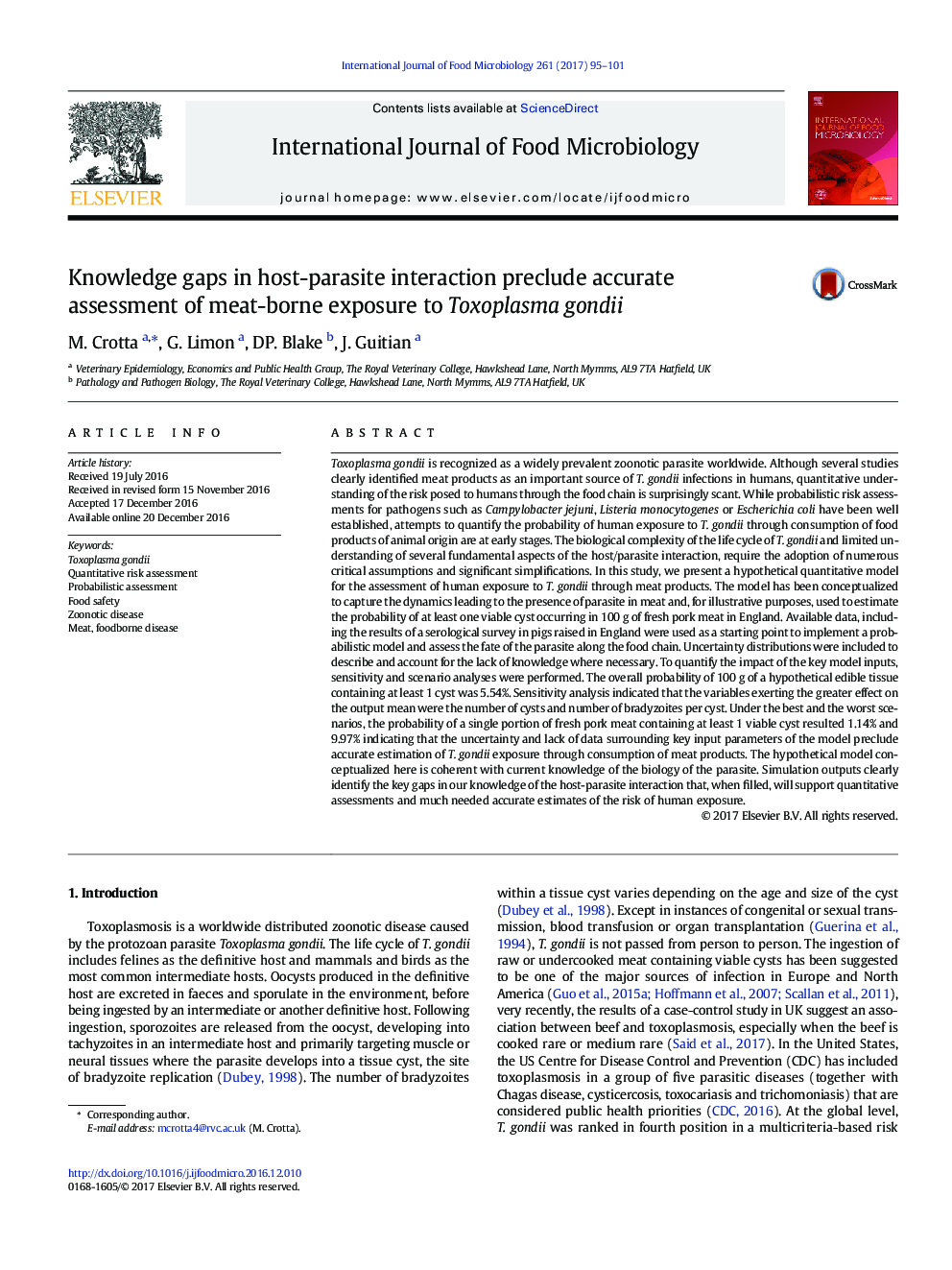| کد مقاله | کد نشریه | سال انتشار | مقاله انگلیسی | نسخه تمام متن |
|---|---|---|---|---|
| 5740582 | 1616522 | 2017 | 7 صفحه PDF | دانلود رایگان |
- Gaps in host-parasite interaction preclude accurate quantitative assessment of exposure to T. gondii.
- The model conceptualized is coherent with current knowledge of the biology of T. gondii.
- The number of T. gondii cysts is the variable with the greater effect on the output.
Toxoplasma gondii is recognized as a widely prevalent zoonotic parasite worldwide. Although several studies clearly identified meat products as an important source of T. gondii infections in humans, quantitative understanding of the risk posed to humans through the food chain is surprisingly scant. While probabilistic risk assessments for pathogens such as Campylobacter jejuni, Listeria monocytogenes or Escherichia coli have been well established, attempts to quantify the probability of human exposure to T. gondii through consumption of food products of animal origin are at early stages. The biological complexity of the life cycle of T. gondii and limited understanding of several fundamental aspects of the host/parasite interaction, require the adoption of numerous critical assumptions and significant simplifications. In this study, we present a hypothetical quantitative model for the assessment of human exposure to T. gondii through meat products. The model has been conceptualized to capture the dynamics leading to the presence of parasite in meat and, for illustrative purposes, used to estimate the probability of at least one viable cyst occurring in 100Â g of fresh pork meat in England. Available data, including the results of a serological survey in pigs raised in England were used as a starting point to implement a probabilistic model and assess the fate of the parasite along the food chain. Uncertainty distributions were included to describe and account for the lack of knowledge where necessary. To quantify the impact of the key model inputs, sensitivity and scenario analyses were performed. The overall probability of 100Â g of a hypothetical edible tissue containing at least 1 cyst was 5.54%. Sensitivity analysis indicated that the variables exerting the greater effect on the output mean were the number of cysts and number of bradyzoites per cyst. Under the best and the worst scenarios, the probability of a single portion of fresh pork meat containing at least 1 viable cyst resulted 1.14% and 9.97% indicating that the uncertainty and lack of data surrounding key input parameters of the model preclude accurate estimation of T. gondii exposure through consumption of meat products. The hypothetical model conceptualized here is coherent with current knowledge of the biology of the parasite. Simulation outputs clearly identify the key gaps in our knowledge of the host-parasite interaction that, when filled, will support quantitative assessments and much needed accurate estimates of the risk of human exposure.
Journal: International Journal of Food Microbiology - Volume 261, 16 November 2017, Pages 95-101
